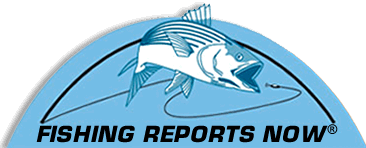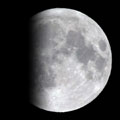ASMFC: Croaker Population Is Increasing
From the Atlantic States Marine Fisheries Commission:
Atlantic Croaker Benchmark Assessment
Finds Resource on the Increase
And Overfishing Not Occurring
Alexandria, VA - The 2010 peer-reviewed stock assessment for Atlantic croaker indicates that the resource is not experiencing overfishing.
Although model estimates of spawning stock biomass (SSB) were too uncertain to be used to precisely determine overfished stock status, biomass has been increasing and the age-structure of the population has been expanding since the late 1980s.
Atlantic croaker are considered to be a single stock on the Atlantic coast.
The previous stock assessment divided the stock into Mid-Atlantic and South Atlantic regions and assessed only the Mid-Atlantic region.
This assessment used data from both regions to produce a single, coastwide assessment.
Data from 1988 to 2008 were included.
The South Atlantic State/Federal Fisheries Management Board first reviewed the findings of the 2010 assessment in May.
Upon the advice of the Peer Review Panel, the Board directed its Technical Committee to produce an additional analysis that would provide for a more certain stock status determination.
With the extra analysis complete, the Board approved use of the stock assessment for management decisions.
Landings of croaker have fluctuated widely over time.
Total reported landings (recreational and commercial) in 2008 were 24.7 million pounds, down from the most recent high of 39.7 million pounds in 2001, but still above the long-term average.
Commercial landings make up about 75% of total reported landings.
The majority of the landings come from North Carolina, Maryland, and Virginia, which report 78% of the coastwide recreational landings and 95% of coastwide commercial landings.
The major source of uncertainty for the assessment is the magnitude of Atlantic croaker bycatch in South Atlantic shrimp trawls. Most croaker caught in this fishery are less than 1 year old, too small to be marketed, and thus are discarded.
Croaker are one of the largest components of the shrimp trawl catch; some studies found that shrimp trawls caught more croaker than shrimp. There are no continuous monitoring programs to account for these discards. This is a problem because the best available estimates of these landings are, in some years, as large or larger than reported landings.
Because of the high degree of uncertainty in the amount of shrimp trawl discards, the estimated values of stock size and fishing mortality are not considered reliable.
However, the estimated trends showing increasing biomass and decreasing fishing mortality were very similar whether estimates of shrimp trawl discards were included in the model or not.
A series of sensitivity runs conducted over a range of plausible values of shrimp trawl mortality all indicated that overfishing was not occurring, thus the Review Panel and the Management Board agreed that Atlantic croaker are not subject to overfishing.
Estimates of SSB based on the same range were less stable, therefore a biomass determination could not be made.
The Review Panel stressed the importance of developing valid estimates of shrimp trawl discards to improve the certainty of future stock assessment results.
Given that biomass is increasing and overfishing is not occurring, the Board did not initiate any changes to the management program at this time.
It did approve the development of an addendum to modify the reference points and remove the distinction of two separate management regions based on the stock assessment.
The draft addendum for public comment may be available for Board review at the Commission's Annual Meeting in November.
A more detailed overview of the stock assessment is available on the Commission website (www.asmfc.org) under Breaking News. It was developed with the intent of aiding media and interested stakeholders in better understanding the Commission's stock assessment results and process.
Copies of the Atlantic Croaker Stock Assessment Report and Assessment Peer Review Report are also available on the Commission website (under Breaking News).
For more information, please contact Nichola Meserve, Fishery Management Plan Coordinator, at (202) 289-6400.
*************************
Tina Berger
Public Affairs Specialist
Atlantic States Marine Fisheries Commission
1444 I Street. NW, Sixth Floor
Washington, DC 20005
Phone: (202)289-6400
FAX: (202)289-6051
Email: tberger@asmfc.org
www.asmfc.org
ASMFC Vision: Healthy, self-sustaining populations for all Atlantic coast fish species or successful restoration well in progress by the year 2015.





